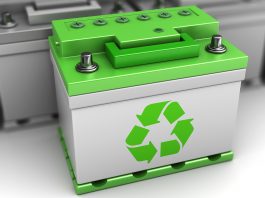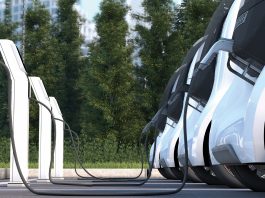With a remarkable 99% recycling rate and successful circular economy, lead batteries surpass the sustainability of newer battery chemistries. Can they respond?
The reliability of the lead battery has made it the most commonly used rechargeable battery technology for the widest range of applications. However, there’s more to report. When it comes to sustainability, lead batteries exemplify how to responsibly and safely manage the lifecycle of product materials, from initial design and sourcing, through to recycling and reuse.
Intrinsic value, established infrastructure
Lead batteries have long been recycled safely, with a sustained recycling rate of 99% in the United States and Europe. In the US alone, modern, ‘closed-loop’ recycling keeps more than 130m lead batteries from landfill sites each year.
In part, driving that rate is the intrinsic value of a lead battery’s components. Lead can be infinitely recycled with no loss of performance, and the plastic casing is melted, pelletised and reused. For decades an established infrastructure has existed to safely collect, transport and handle spent lead batteries. The innovative processes for recycling lead batteries, and the facilities that support them, have progressively advanced to become one of the greatest recycling success stories in the global marketplace.
Today, the lead battery industry is an enviable example of closed-loop manufacturing, creating its own circular economy. That means almost every new battery consists of over 80% recycled material, according to Battery Council International (BCI). BCI is the principle trade association for lead battery manufacturers and recyclers in North America and other partners engaged in every facet of the industry.
Designed for recycling
BCI and member companies work together to educate the population that not all batteries are created equal, especially in environmental stewardship. For lead batteries, that commitment starts in the concepting phase. Manufacturers and recyclers work together to ensure new batteries are designed for safe, efficient recycling that feeds a circular system of reuse.
The industry’s success is challenging other battery manufacturing industries, such as lithium-ion, to replicate what the lead battery industry is doing, and doing very well, according to The Sustainability Consortium: “Lead batteries close the loop more effectively than any other product in the consumer goods space. We’d like to leverage the lessons of this industry to help others reach the same type of performance for their end-of-life products,” said Dr Carole Mars, with The Sustainability Consortium.
A lead battery’s path to reuse
To understand lead battery circularity, it’s helpful to follow the recycling process of a lead battery itself. Put simply, using modern, safe methods, lead battery recyclers take materials that would otherwise be discarded and turn them into useful products, i.e. a battery-to-battery model versus cradle-to-grave model. Here’s how: once a spent lead battery is received at the recycling facility, the battery is disassembled into pieces. They go into a vat, where the lead and heavy materials fall to the bottom, while the plastic rises to the top. At this point, the polypropylene pieces are scooped away, and the liquids are drawn off, leaving the lead and heavy metals. Each of the materials then begin their own recycling journey:
Plastic
The polypropylene pieces are washed, dried and sent to a plastic recycler where the pieces are melted together. The molten plastic is put through an extruder that produces small plastic pellets. Those pellets are then sold to the manufacturer of battery cases (or other items), and the process begins again.
Lead
The lead plates/grids, lead oxide and other lead parts are cleaned, melted and poured into ingot molds. After cooling, the ingots get sent to battery manufacturers and used in the production of new lead plates and other parts for new batteries.
Sulfuric acid
Used battery acid is neutralised into water. The water is treated, cleaned and tested to meet clean water standards, and then released into the public sewer system. Or, the acid is converted to sodium sulfate, an odorless white powder used in laundry detergent and glass and textile manufacturing. Acid can also be reused in new battery products.
Why lead batteries are recycling friendly
Dr Mark Drezdzon is vice president of research and development at RSR Technologies, a BCI member company. RSR is a subsidiary of Ecobat Technologies, one of the largest recyclers and producers of lead on the planet. Drezdzon, a trained chemist, described additional factors that make one battery chemistry easier to recycle than others. As an example, he compared lead batteries to the many technical challenges involved in recycling lithium-ion batteries. They primarily follow a linear manufacturing model of take-make-dispose, which equates to a less than 5% recycling rate.
“In general, newer battery technologies have a more difficult time achieving the recycling advances and developing reclamation processes comparable to those established by the lead battery industry,” Drezdzon noted. He explained the recycling chasm and safety issues for consumers and recycling employees:
Lead battery
- Material: a universal fact of recycling is that the less diverse the materials and chemistries, the easier to sort. Drezdzon stated that a lead battery has a fairly standard chemistry (lead, plastic and sulfuric acid), which creates uniformity, regardless of the battery manufacturer or the battery’s shape and size.
- State of charge: regarding safety during recycling, Drezdzon explained that for lead batteries, their state-of-charge when reclaimed isn’t important. “Most lead batteries received for recycling are spent, but if a fully charged battery arrives, it doesn’t matter.”
- Electrolyte chemistry: a lead battery uses sulfuric acid, which is non-volatile and relatively easy to handle and reuse or recycle.
Lithium-ion battery
- Material: the complexity and variety of materials make it difficult to put lithium-ion batteries into a recycling loop, Drezdzon said. He gave an example of a Chevy Volt battery: “These things are […] very complex in that they have to be robust; they have to withstand anything that might happen out on the road. But they’ve got so many materials involved with them that are actually not involved with the battery.”
- State of charge: unlike a lead battery where the state of charge is irrelevant, “The state of charge here [in the Chevy Volt battery] is important, because if you don’t take these apart safely, you can knock yourself into next week really easily. You have to make sure that they’re discharged properly so you don’t injure yourself.”
- Electrolyte chemistry: currently, there is no standard chemistry for a lithium-ion chemistry (more than a dozen are in use), making it challenging for sorting and recycling. “Lithium-ion batteries use low-boiling-point organics, which are subject to potential fire and explosions and must be handled very carefully,” Drezdzon explained.
For example, when lithium-ion batteries mistakenly enter the lead battery recycling stream, they pose a serious threat to lead battery recyclers’ employees and equipment. Lithium-ion batteries can explode when crushed during the lead battery recycling process. And, there’s a safety risk when the lithium-ion batteries begin to fail. They have the potential to become over-pressurised and explode. To protect workers, BCI also educates member companies on safety around lithium sorting.
Improving global environmental, health and safety standards
In Europe and the United States, lead battery manufacturing and recycling is rigorously regulated and takes place within stringent safety and environmental standards. However, the value of lead and other materials from recycling used batteries may be driving an uptick in improper (informal) recycling within developing regions of the world. Unregulated battery recycling (of any battery chemistry) can cause serious health risks for employees and nearby communities.
To combat those practices, lead battery industry associations recently joined forces to advance environmentally responsible production and recycling worldwide. The associations agreed to formalise on-going industry efforts to improve recycling practices in low- and middle-income countries, where regulations and industry safety standards are either inadequate, non-existent or ineffectively enforced.
BCI Executive Vice President Kevin Moran, speaking on behalf of the participating associations, said: “We want to ensure that manufacturing and recycling of lead batteries worldwide meets standards that protect human health and the environment.”
What’s ahead for lead?
Innovation! The world’s demand for efficient energy storage will require a mix of battery technologies. Modern lead batteries are an essential part of that mixture and are essential to environmental sustainability. Innovative research is currently underway in the U.S. Department of Energy’s National Laboratories system. The exciting results will help to ensure that lead batteries will continue to provide sustainable energy storage for transportation, logistics, renewable energy and communications infrastructure around the world.
Lisa Dry
Director of Strategic Communications
Battery Council International
Ldry@batterycouncil.org
info@batterycouncil.org
www.essentialenergyeveryday.com
Please note, this article will also appear in the first edition of our new quarterly publication. Subscribe to our updates for free here.









